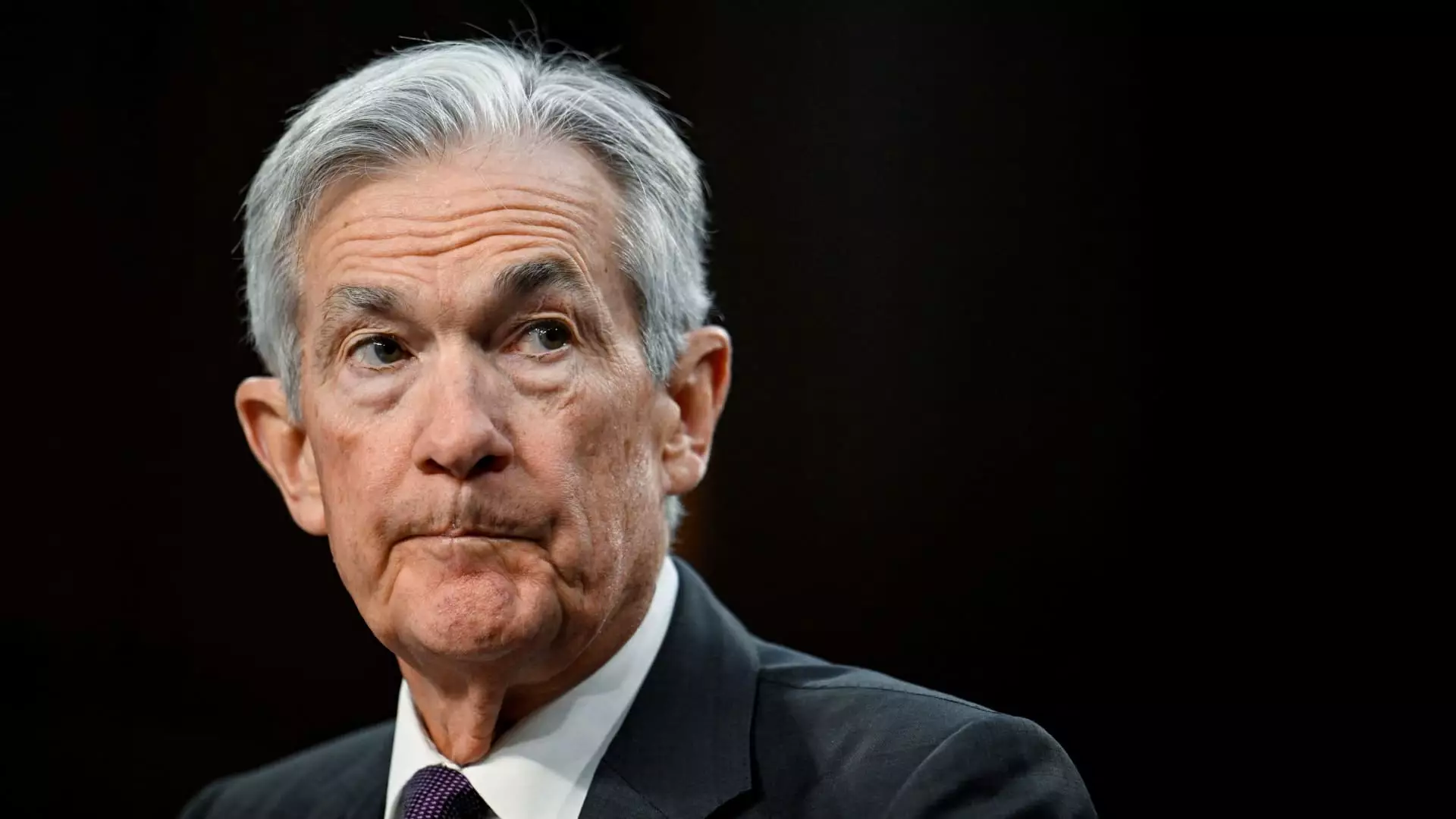In the current economic landscape, Federal Reserve policymakers find themselves in a paradoxical state. While officials articulate that monetary policy is “well-positioned” to pivot in response to varying risks, the reality may reflect a more stagnant scenario where intervention feels frozen. This lingering uncertainty stems from a multitude of factors, foremost being the unpredictable nature of trade, immigration, and fiscal policies emerging from Washington. As these currents shift and sway, the Fed remains steadfastly in a neutral gear, confronting a prolonged wait for clarity on what lies ahead.
Federal Reserve actions and statements are increasingly tinged with a heavy shade of caution. Atlanta Fed President Raphael Bostic recently encapsulated this sentiment by emphasizing that uncertainty demands humility in policymaking. The atmosphere of unpredictability is not merely a personal observation but rather a shared sentiment among Fed officials. A glimpse into the minutes from a recent Federal Open Market Committee (FOMC) meeting reveals a repeated acknowledgment of “elevated uncertainty,” specifically referencing potential changes in trade, immigration, fiscal policies, and the regulatory landscape. Each of these elements presents its own set of ramifications, rendering straightforward decision-making more complex than ever.
Inflation management has emerged as another focal point in this uncertain environment. The Federal Reserve has been striving to achieve an inflation target of 2%, yet it remains elusive, having almost reached four years in its pursuit. St. Louis Fed President Alberto Musalem voiced concerns indicating that risks related to inflation are skewed to the upside. His comments illustrate the precarity of the current economic conditions; he suggested that while the baseline scenario targets an inflation moderation towards 2%, alternative paths might lead to elevated inflation rates, particularly influenced by consumer and business reactions to impending tariffs.
Interest Rates: The Tightrope Walk
The Fed’s current stance on interest rates can be likened to a tightrope walk—balancing between stimulating economic growth and curbing inflation. Musalem references the fed funds rate, suggesting that the level is “modestly restrictive,” and hints at a demand for a meticulous approach as economic conditions evolve. His caution resonates with Bostic’s view that complacency is not an option, as other potential threats to price stability loom on the horizon.
Interestingly, divergence among Fed officials about the appropriate direction for rates has surfaced. Chicago Fed President Austan Goolsbee’s reluctance to take a hawkish view showcases a nuanced understanding of the complexities at play, particularly the variable impact of tariffs. His hesitation underscores a broader sentiment among Fed officials: that they are not ready to take bold steps without a clearer picture of the underlying economic conditions.
Beyond inflation and interest rates, the minutes of the January meeting echoed concerns regarding overall financial stability in the U.S. economy. The Fed highlighted the burdens posed by leverage and long-duration debt held by banks, raising alarms about potential risk factors that could destabilize the market further. Notably, economist Mark Zandi articulated fears regarding the fragility of the $46.2 trillion U.S. bond market, suggesting that it is at risk of a significant sell-off if certain conditions evolve unfavorably.
Zandi’s caution serves as a reminder that an admirable performance of the economy as it stands does not render it immune to shocks. With so many potential pitfalls—risk from tariffs, uncertainties around fiscal policies, and now the fragile state of the bond market—the path forward remains unpredictable. It’s a sentiment echoed by many analysts, who argue that the circumstances do not align for the Fed to undertake interest rate cuts anytime soon, reinforcing the idea that a cautious approach is warranted.
As the Federal Reserve treads this precarious path, the overarching theme is one of caution and restraint. With so many elements at play, crafting a coherent strategy in the face of ambiguity is a monumental task. The need for clarity on inflation, coupled with a thorough assessment of the financial stability framework, will dictate future moves. For now, the Fed finds itself in a holding pattern, watching, waiting, and responding to the evolving and often unpredictable economic landscape. While optimistic forecasts may circulate through markets, the reality is that until clearer indicators of economic robustness emerge, the Fed’s policy responses will remain tempered and focused primarily on maintaining stability amidst uncertainty.

